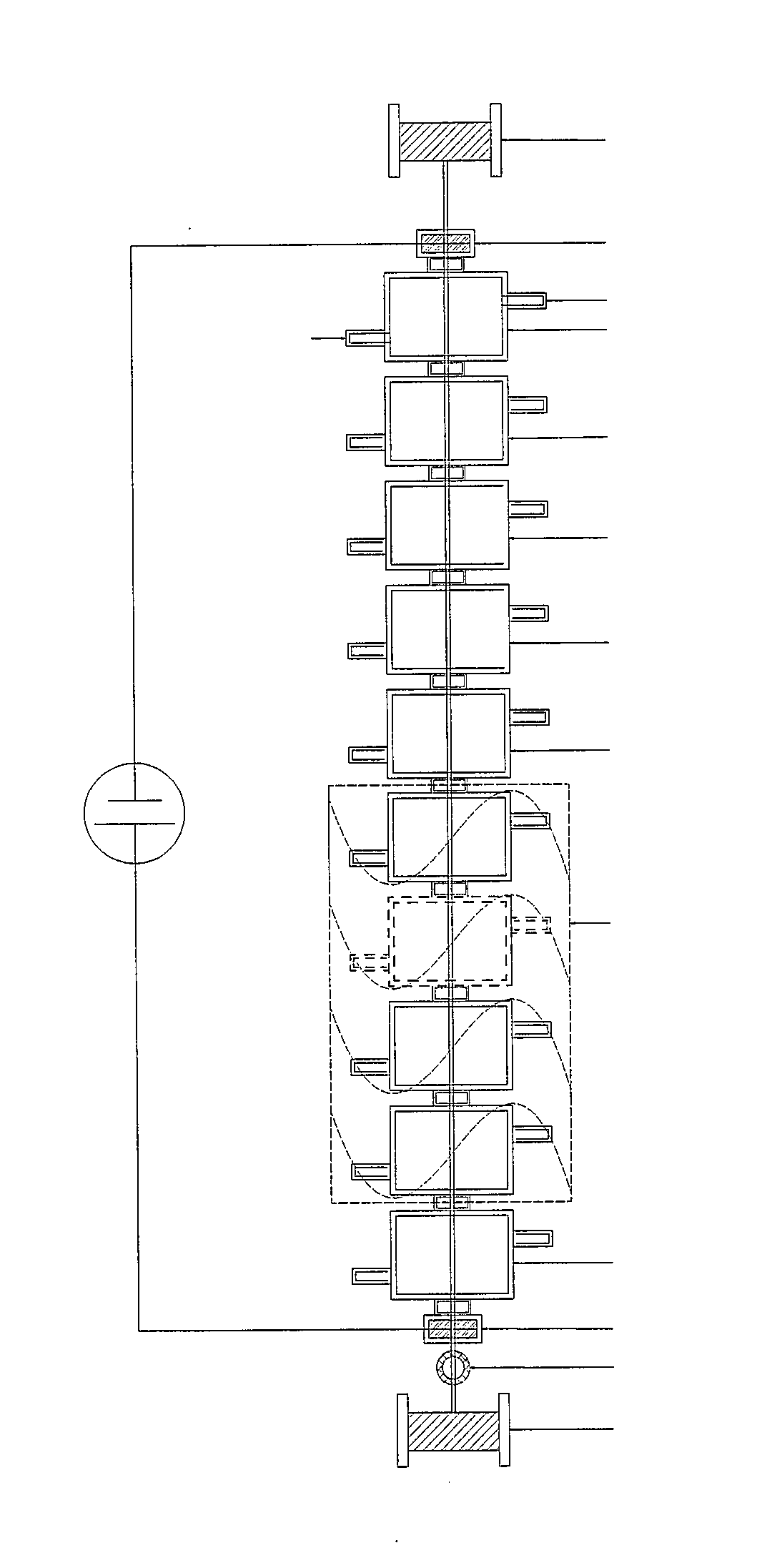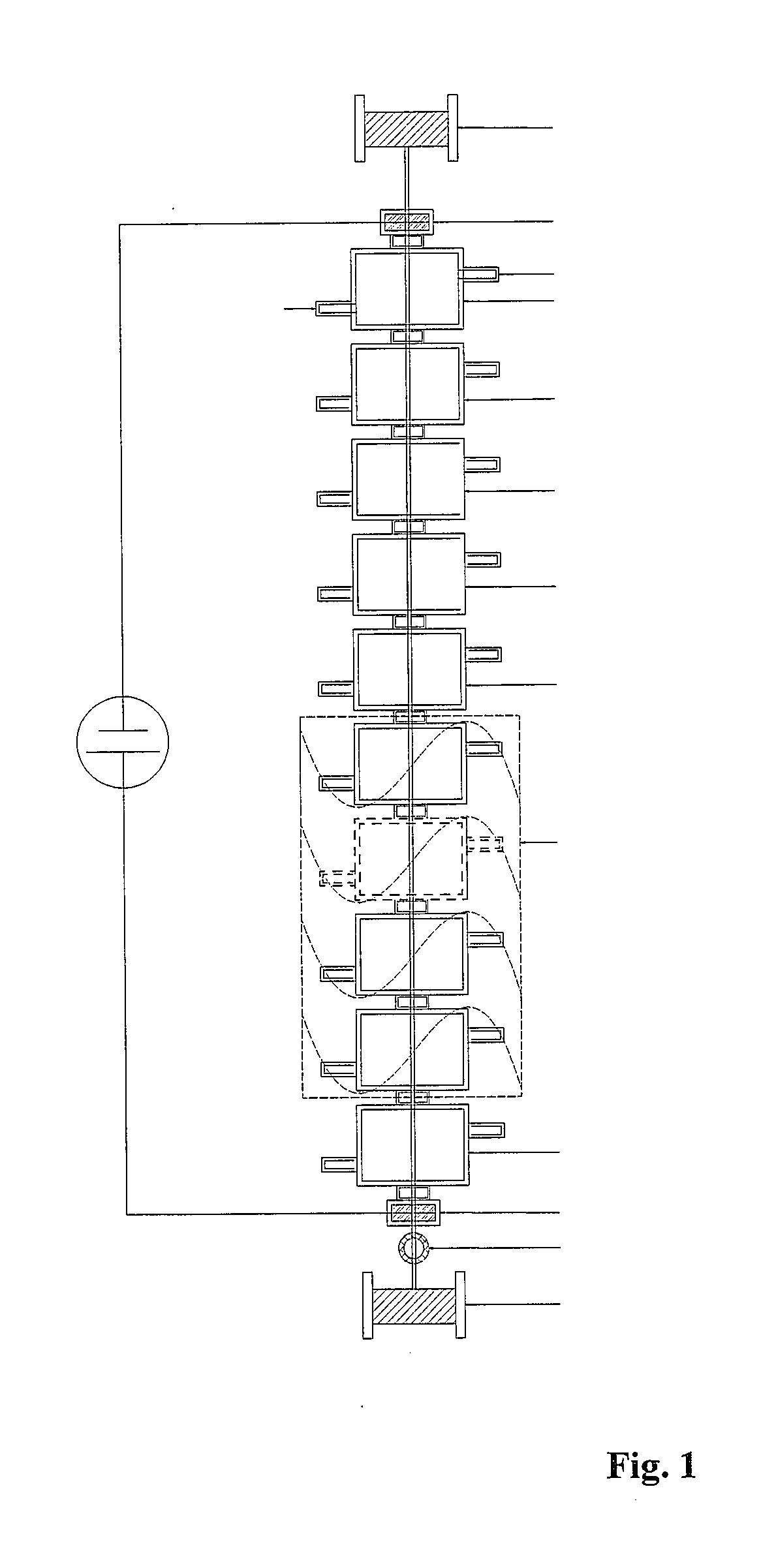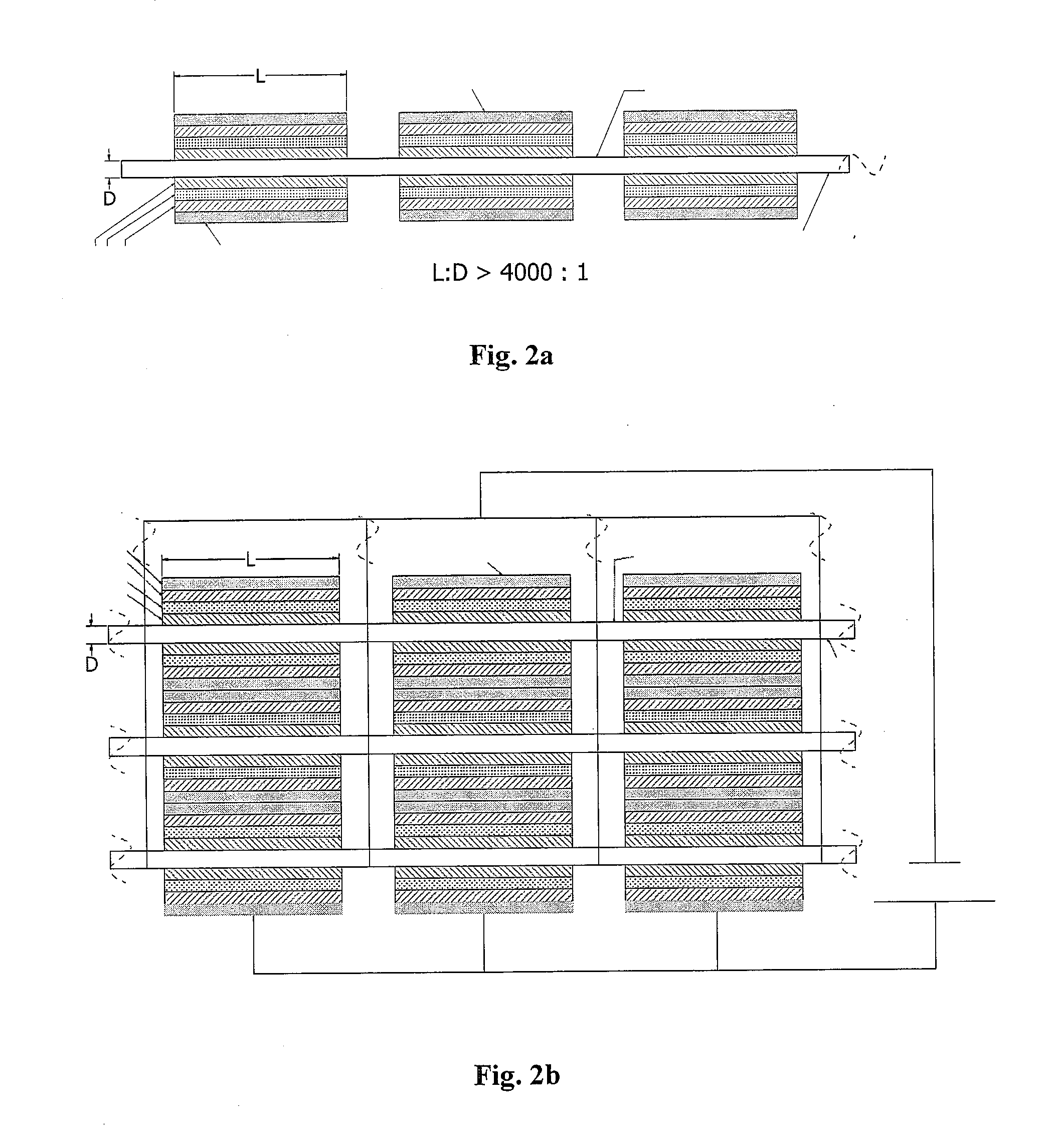Battery reinforced polymer composite smart structure
a composite structure and reinforced polymer technology, applied in the field of lithium ion batteries, can solve the problems of battery addition, unsuitability for most applications, and inability to easily integrate traditional liquid electrolyte libs into the structure of reinforced polymer composites, and achieve high stiffness and strength, and dimensional stability to the composite structure
- Summary
- Abstract
- Description
- Claims
- Application Information
AI Technical Summary
Benefits of technology
Problems solved by technology
Method used
Image
Examples
Embodiment Construction
[0017]An embodiment of the present invention relates to using a thermal chemical vapor deposition process (TCVD) to nucleate and sequentially grow concentric layers of cathode, electrolyte, anode and anode current collector onto an electrically conductive solid substrate with a circular cross-sectional. The electrically conductive substrate acts as a current collector for the cathode during battery charging and discharging. In this embodiment, deposition of the anode layer onto the electrolyte layer allows outwardly volumetric expansion of anode constituents during the intercalation-deintercalation processes. (Note: in other embodiments the cathode and anode layers may be reversed.) One further advantage of concentric layer deposition over a circular substrate is that it minimizes mechanical stress non-uniformities within the deposited material as compared to flat substrates used in traditional SSB fabrication.
[0018]As seen in FIG. 1, a vertical TCVD tubular deposition apparatus (re...
PUM
| Property | Measurement | Unit |
|---|---|---|
| diameters | aaaaa | aaaaa |
| diameters | aaaaa | aaaaa |
| volume fraction | aaaaa | aaaaa |
Abstract
Description
Claims
Application Information
 Login to View More
Login to View More - R&D
- Intellectual Property
- Life Sciences
- Materials
- Tech Scout
- Unparalleled Data Quality
- Higher Quality Content
- 60% Fewer Hallucinations
Browse by: Latest US Patents, China's latest patents, Technical Efficacy Thesaurus, Application Domain, Technology Topic, Popular Technical Reports.
© 2025 PatSnap. All rights reserved.Legal|Privacy policy|Modern Slavery Act Transparency Statement|Sitemap|About US| Contact US: help@patsnap.com



